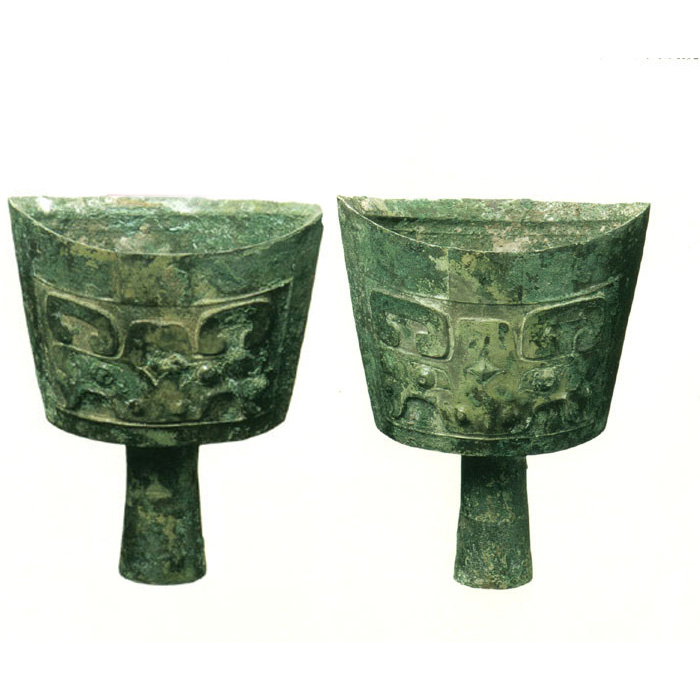nao overview
 Nao (pinyin: náo), also known as the bell, is one of the bronze percussion instruments used in ancient China. Used in the military, the function is to give instructions to stop drumming. It was popular in the late Shang Dynasty and was used in the early Zhou Dynasty. It is a round copper musical instrument that is often played with cymbals.
Nao (pinyin: náo), also known as the bell, is one of the bronze percussion instruments used in ancient China. Used in the military, the function is to give instructions to stop drumming. It was popular in the late Shang Dynasty and was used in the early Zhou Dynasty. It is a round copper musical instrument that is often played with cymbals.The allusion "Zhou Li·Diguan·Drumman" describes it as "stopping the drum with a golden cymbal". The shape of the nao is similar to a bell, but it is larger and has an arc-shaped mouth. The body width is greater than the body height, it is upright and inverted, with a handle under it, and the hammer is struck to make a sound. According to "Shuowen Jiezi", the nao is actually a small zheng, which was used in the Yin and Shang Dynasties and was an early musical instrument. A combination of five pieces unearthed from the tomb of Fuhao in Yin Ruins is a ritual vessel for the sacrifice of Yan Xun.
Nao is often used in Buddhist and Taoist music and cultural and entertainment publicity activities. It is inseparable from the accompaniment of lion dances, dragon dances, ethnic minority songs and dances, Tibetan opera, Zhuang opera, Cantonese opera, Hebei Bangzi and other ethnic instrumental ensembles. musical instrument.
When playing, each hand strikes each other with one side, and there are flat strikes, side strikes, smouldering strikes and other techniques. It is used for ensembles of folk instrumental music such as wind and percussion in southern Jiangsu, local operas such as Kunqu Opera and Cantonese Opera, and accompaniment of folk songs and dances such as lion dance and dragon dance.
- Pinyin:náo
- material:bronze
- effect:broadcast orders
- type:percussion
- alias:bell
overview of other similar instruments
- sanyanxiao overview
- Daguangxian overview
- Leiqin overview
- hahao overview
- yandundagu overview
- Han Xiaozheng overview
- Fang Xiang overview
- guanzi overview
- zhuqin (Dao Qin) overview
- zhuiqin overview
- bangzi overview
- three-stringed piano overview
- Gehu overview
- xiao overview
- xiaokonghou overview
- Konghou overview
- Sheng overview
- suona overview
- hulusi overview
- gushao overview
 渝公网安备 50010702504639号
渝公网安备 50010702504639号